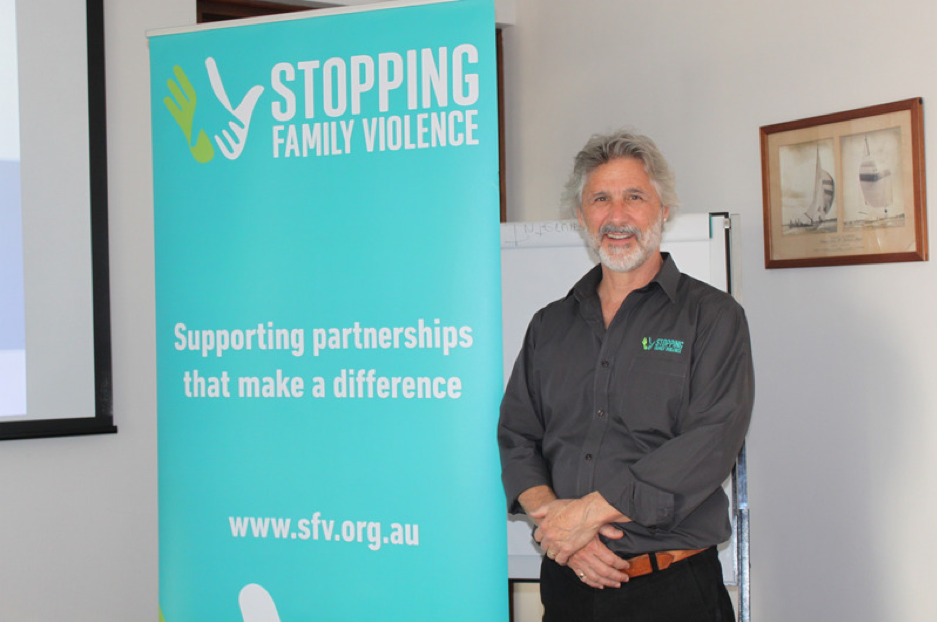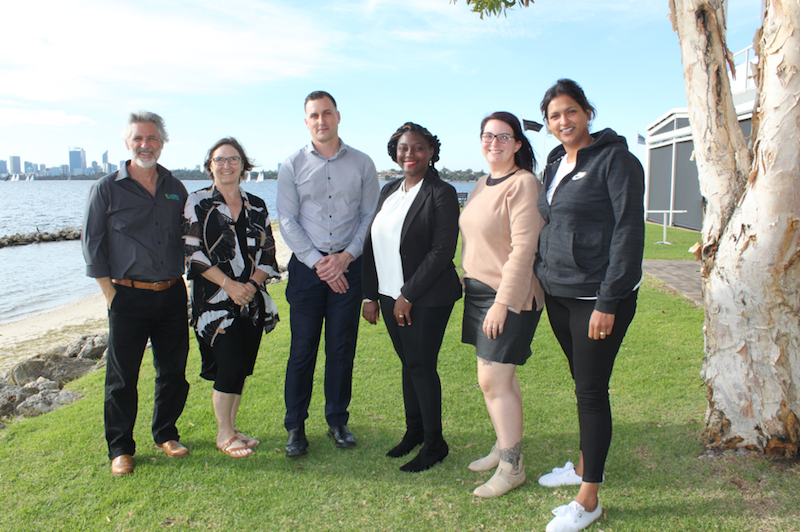“There’s a commonly held idea that children are not affected by domestic violence if they are not in the room when it happened. However, that is a misconception; we now know the evidence is clear that children are impacted and can be severely traumatised. Children experience the yelling, the hitting, the screaming, the crashing, in a myriad of ways, whether they are present or not,” Dawson Ruhl said as he delivered day one of the Safe & Together (S&T) CORE training in Perth in early May.
Stopping Family Violence Project Coordinator Dawson said a central aim of the S&T model was to assist organisations and the service sector to become more broadly DV-informed in terms of the practice culture, and how family and domestic violence (FDV) is documented.
“The Safe and Together Core training approaches FDV as a pattern of coercive behaviours, rather than incident-based which gives us a better, more holistic understanding of the abuse,” he said.
“A key concept of the S&T model is that perpetration is a parenting choice; therefore, even though children may not be directly impacted by the violence, indirectly the whole family is affected by the perpetrator impinging on the non-offending parent’s ability to successfully parent.”
Dawson Ruhl – SFV
The purpose of the training is identifying ways to keep the child safe and together with the non-offending parent, partner with and focus on the survivor’s strengths, and intervene with the perpetrator to reduce risk and harm to the child and overall family functioning.
The training is held over four days and each day is broken down into assessment, interviewing, documentation and case planning, to gain a more holistic approach to perpetrator response and keeping the children and family safe through a greater understanding of the whole situation. Over four days in May, 16 people representing community services agencies and the WA Police, came together for the Safe & Together (S&T) core training at the South of Perth Yacht Club. Stopping Family Violence has delivered this training through the Safe & Together Institute for approximately one year and the goal moving forwards is to make the whole FDV sector DV-informed in their language, documentation and assessment processes.
In attendance, we had representatives from Yorgum Aboriginal Corporation, Orana House Refuge, WAPOL FDV unit, Starick and Salvation Army Refuge services, who all brought such a wealth of knowledge, experience and camaraderie to the group with their experiences and support.
Having such a varied group attend, meant there were excellent opportunities to network and really engage with one another, as the group discussed some of their more complex cases and intersectionalities they may be dealing with.
Starick’s Manager of Services, Delivery and Design, Jeanine Lumsden, attended with three other colleagues from her organisation and she said it made a big difference.
“Having several of our team members learning together, really enabled us to integrate the model into our service,” she said.
“It was great to come back to Starick and move forwards with that ‘shared language’, as we work with other organisations to better assist the non-offending parent and support our child-centred practice.”
Jeanine Lumsden – Starick
Representatives from Starick have attended previous S&T training, so all management have now completed the CORE training, which has had a significant impact on the work they do in the sector.
Orana House Women’s Refuge also had two staff members attend, and Outreach Worker Stephanie said she enjoyed attending the training with different people from multiple agencies, with all levels of experience throughout the sector.
“It was great to learn about how we could make simple but effective changes, to adapt the way we speak about FDV in the sector,” she said.
“I look forward to using the sample questions and information I have learnt to refine my case planning, and how I can interact with different agencies. I also hope that by changing the way I write and present information regarding my clients, it will give other agencies a bigger picture and change the way they may work with them also.”
A Senior Constable from the WAPOL Cold Case serious crime squad, said she was grateful to learn more about effective interviewing through the S&T training.
“By understanding this information and being more DV-informed, we can ask more questions to better understand the victim and their circumstance,” she said.
“If we understand their response to the violence, we can react differently and assess all of the information. It might add five minutes to the interview time, but if we can avoid months of questioning and trauma for the victim when they enter the judiciary system, then it’s worth doing.”
“We can use these tools we’ve learnt to make our interviews more effective, but still comply with the police model.”
Key differences in this S&T model is that by engaging with fathers and approaching them with high parental expectations, we break down the gender bias to parenting which focus predominantly on the mother, and her ability to protect the children from harm (or inability to do so).
This can only be done by understanding the whole spectrum of men’s behaviour patterns, and how they impact the overall family functioning.
Stopping Family Violence Operations Manager Mark O’Hare said it was imperative to shift that attitude of blame from the victim to the perpetrator, so they can own their behaviour.
“It’s only by shifting that attitude of ‘why didn’t she leave’ to ‘why didn’t he stop’, that we can really work towards putting a spotlight on the perpetrator and their behaviour, rather than victim-blaming and examining a mother’s ‘failure to protect’ her children.”
Mark O’Hare – SFV
Another Senior Constable from the WAPOLFDV unit said she believed there needed to be a change in the police department to bring DV-informed thinking and language into the work that they do.
Fremantle Family Violence Coordinator Sergeant Mike Martin from WAPOL, said he thoroughly enjoyed the training and would recommend it to anyone in the family violence sector.
“Bringing the perpetrator into focus and working with the non-offending parent are crucial steps to positive outcomes,” he said.
“I really want to thank all the wonderful people at the course who I learnt a lot from, through the stories they shared and the wonderful work they all do.”

Dawson said the training would be useful to anyone working with families impacted by FDV, and he was heartened to see in attendance representatives from all sides of the intervention spectrum – from the police force to victim’s advocacy groups.
Find out more information about the Safe & Together Institute here.
Words by Jacqui O’Leary
